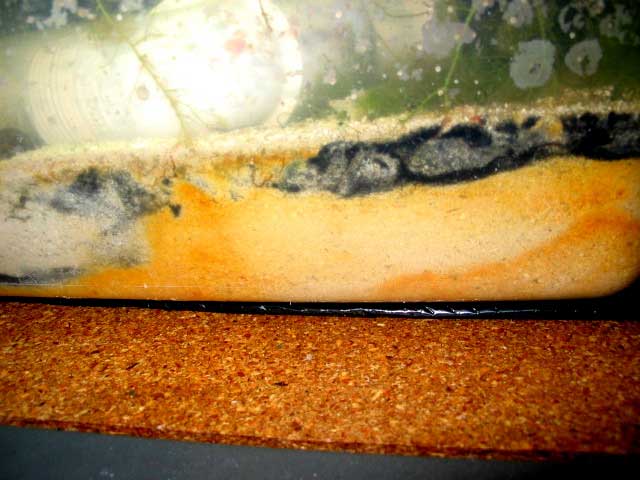hey has anyone readed the latest edition of reefkeeper? hydrogen sulfate is some deadly stuff, many of our aquariums dont have the ability of converting H2S into thiosulfate, or ironsulfate. Summarizing it our body uses hemoglobin 4 iron grouped molecule to remove stuff harmful to our body such as Co2, iron can also drive down sulfate, which is added into the aquarium by many products such as epsom salt, as a mitochondria inhibitor, it's also a ATPase inhibitor. I find many aquarist, doesnt know the chemestry behind the tank, so i like to summarize some of the articles, and if someone like shaun and others are better then me and can correct me, i can learn more too! we can discuss this further if anyone has any knowledge of this chemestry. On with the show, H2S can be loosely attached to iron, so iron oxide, which is phosban can also remove H2S, as well as desolved oxygen.
Sandbed problems!
many people dont understand the H2S buildup underneath their sandbeds, the sandbed itself contain anerobic bacteria. This bacteria converts no3 to H2S like many other form of denitrators. If you remove a sandbed please dont sell it to people as livesand, or dump it back into your own tank, this sand was anoxic(absense of oxygen) once you take it out sulfate combines the H20(water) quickly grabs a oxygen ion instead of the sulfate. 2 H2S + O2 ? 2 H2O + 2 S which allows a black stuff to form and quickly smell like crap, dont buy used sandbeds or reuse sandbeds, if you do please read dissolved organics. People whole pulled out their sandbed and didnt smell, wait couple of hrs and then look at the color changing and oder creating it undergoes.
please read the bottom part of the article of http://www.reefkeeping.com/issues/2005-12/rhf/index.php#1
and lets have some discussion about our sandbeds!
sorry for being bored hehhehe
Sandbed problems!
many people dont understand the H2S buildup underneath their sandbeds, the sandbed itself contain anerobic bacteria. This bacteria converts no3 to H2S like many other form of denitrators. If you remove a sandbed please dont sell it to people as livesand, or dump it back into your own tank, this sand was anoxic(absense of oxygen) once you take it out sulfate combines the H20(water) quickly grabs a oxygen ion instead of the sulfate. 2 H2S + O2 ? 2 H2O + 2 S which allows a black stuff to form and quickly smell like crap, dont buy used sandbeds or reuse sandbeds, if you do please read dissolved organics. People whole pulled out their sandbed and didnt smell, wait couple of hrs and then look at the color changing and oder creating it undergoes.
he aquarium had a bed of 1-2 inches of fine oolitic aragonite sand and contained wild Florida live rock (not aquacultured) placed in the tank when it was started. As I dug through the sand, I found no black areas, and detected no unpleasant odors. None of the rock had any apparent grey or black discoloration. All rocks were a uniform tan color on areas not exposed to light. The sand was put into a bucket and remained in the garage for two weeks. When I then dumped the sand out behind the garage, it was grey and it stank to high heaven. Clearly the processes leading to hydrogen sulfide formation were not taking place in the sand bed in the tank, but that same sand quickly became anoxic when removed from the aquarium.
please read the bottom part of the article of http://www.reefkeeping.com/issues/2005-12/rhf/index.php#1
and lets have some discussion about our sandbeds!
sorry for being bored hehhehe
Last edited:






